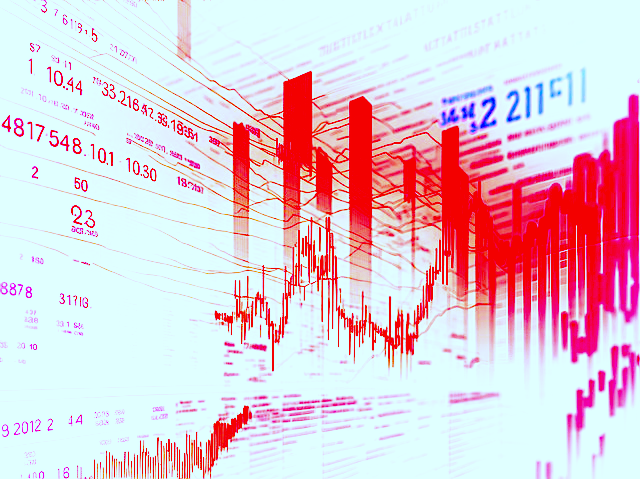The Cryptocurrency market is a relatively new phenomenon, and trading strategies on these markets are still evolving, while investors continue perfecting their approach in benefiting from the opportunities they hold.
But with great opportunities also come obstacles. And buy and sell walls are those common events that can put any investor and their strategy to the test.
For one to pass the test and prove sustainability of the selected strategy and knowledge of the market, sentiment it is crucial to know what they are, when they occur and how to handle them.
Introduction to Crypto walls
Walls on the Cryptocurrency market are events that can be identified as price points when huge volumes of buy or sell orders are placed at a specific price level.

The immense amount of orders in one direction, with a certain price, visually form a wall that can be observed on a depth chart or in an order book.
Buy and sell walls can be placed by a single trader, such as a whale. One that holds a substantial reserve of the chosen asset and could pour great amounts of this reserve into the market with a single order.
Or they can be set up by a well organised group of traders or investors that agreed to place a significant amount of similar orders at the same price level, all at once.
Crypto walls can differ in nature and are not always a negative sign, but they typically signal that someone intends to push the price of the asset in question in their favour. This is also known as price manipulation.
What is a buy wall?
When a buy wall occurs it represents a large buy order (type: limit) or a large amount of smaller limit orders on the buy side of an order book which sets up a wall at a certain price of the asset.

The bigger this horizontal line in the order book, the more buyers there are, and the more difficult it is for the price to drop below the threshold.
The created sense of rising demand can attract other traders to place additional buy orders as FOMO inflates, thus further strengthening the buy wall.
What is a sell wall?
A sell wall is the exact opposite of the buy wall. It occurs correspondingly when there are more limit orders on the sell side of the order book.

The created barrier is intended by an individual or a group of traders to manipulate prices, preventing them from going up. The greater the barrier, the more sellers are involved in action.
Sell walls may indicate a surge in the supply of the given asset at specific price levels. This affects the demand negatively and results in a downtrend.
How to identify walls
Identifying walls in real market conditions on Cryptocurrency exchanges can be a difficult task without using the fundamental instruments required to find one.

Although you are less likely to find a chart pattern of a Crypto wall among the largest Cryptocurrencies on the market, you might encounter one amidst the minor assets. And when you do, there are some handy tools you can resort to, to properly evaluate a wall.
The role of the order book
An order book lists all buy and sell orders placed by the traders on the market for the selected instrument. Order books are meant to help traders make more informed decisions and assist in technical analysis.
Unfortunately, bigger and more experienced investors sometimes use them to manipulate the prices by placing limit orders, thus distorting the actual picture of market sentiment.
It is vital to stay patient when detecting a massive limit order, or a big amount of smaller identical limit orders entering the order book as this may point to a potential Crypto wall.
Using depth charts for wall identification
Another great tool to monitor and detect Crypto walls is the depth chart. It allows you to understand the supply and demand of the selected asset at a specific moment of time.
The depth chart is a great compliment to the order book, as it serves as its visual representation and reveals the actual picture of market action for a particular Cryptocurrency.
What is a whale wall?
The ambiguous nature of Crypto walls makes them a more complex phenomenon then they may appear.

Buy and sell walls are often created by whales, big investors that hold large amounts of a specific Cryptocurrency. When aiming to reduce their exposure in this currency, for example, they resort to price manipulation by placing a large limit order into the order book to achieve the desired result.
When reaching a particular price or successfully holding the price level in place, a limit order could be removed once the sell-off action was completed. In some cases, this leaves the remaining participants in unprofitable or unwanted positions.
Detecting market manipulation
While buy and sell walls refer to manipulation in regular conditions, not every wall on a Cryptocurrency exchange indicates that a whale or a group of traders are attempting to affect the prices in their favour.

If a large limit order has been placed into an order book’s queue and remained unexecuted for a while, there is a high probability that the buyer or seller is genuinely interested in waiting for a certain price to be reached for his order to be executed.
Evaluating walls with market depth
Whether you’re looking at a real wall or an artificial object, market depth is a valuable indicator for conducting thorough analysis and forming a realistic assessment of observed activity.
Market depth is an indicator that reflects market liquidity of a Cryptocurrency, based on the number of standing orders to buy or sell it at various price levels.

Depth is considered high and valid when there are equally high amounts of pending orders on both sides of the order book, i.e. to buy and sell.
In this scenario, prices are difficult to manipulate with large orders because as they will be easily absorbed by the order book, and won’t lead to significant shifts.
Conclusion
Trading on the Cryptocurrency markets is always a high risk to reward activity. Any particular Cryptocurrency investment is speculative and phenomenons like as buy and sell walls are common events in such conditions.
To protect yourself from price manipulations that lead to undesired positions and unexpected losses, you must always resort to full and complete analysis.
Fundamentals of analysis like understanding market depth, depth charts, order books, and what purpose they serve can help you achieve maximum results with your strategy.
Open free accountThe content provided here is for informational purposes only. It is not intended as personal investment advice and does not constitute a solicitation or invitation to engage in any financial transactions, investments, or related activities. Past performance is not a reliable indicator of future results.
The financial products offered by the Company are complex and come with a high risk of losing money rapidly due to leverage. These products may not be suitable for all investors. Before engaging, you should consider whether you understand how these leveraged products work and whether you can afford the high risk of losing your money.
The Company does not accept clients from the Restricted Jurisdictions as indicated in our website/ T&C. Some services or products may not be available in your jurisdiction.
The applicable legal entity and its respective products and services depend on the client’s country of residence and the entity with which the client has established a contractual relationship during registration.




